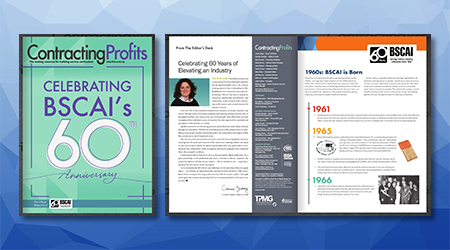
The tricky thing about turnover for a BSC is that it impacts so much. Like any business, there’s cost considerations. Experts say the upfront costs of turnover are not cheap.
Flug has found the cost of losing a common BSC worker range from $2,000 to $5,000 depending on tenure, account complexity, and shift coverage interruption. St. John says that across all businesses in the United States, the cost of turnover is often one to 1.5 times the salary of the departing worker. But when looking at just BSCs, she says the big costs are having to permit overtime so that the difference in labor can be made up, as well as the mental toll on an already heavily taxed workforce.
When there is more than one employee leaving, the costs really start to add up.
“For simplicity, let’s use a 100 percent turnover rate at a conservative replacement cost of $1,000. If you have a team of 100, hiring a team of 100 replacement employees could cost roughly $100,000 annually, not including lost productivity, training, or potential impacts on safety and customer satisfaction,” says Fitts.
Going beyond the numbers, it’s important to consider the strain turnover has on a BSC’s relationship with the customer. Like a friendship or romance, the BSC-client relationship not only takes time to establish but also must be nurtured for its duration.
“I think the biggest impact is trust,” says Flug. “Losing an employee can cause anxiety for the customer and lead to increases in complaints. Then they must go through the new employee training process, which leaves room for quality control issues, and in the end, possible loss of contract.”
Not all employees are around long enough that they become a face the client recognizes, trusts, and enjoys seeing. While a quick departure might be easier to accept in that regard, fast turnover has a negative impact, too. Unfortunately, this occurs often. St. John says a lot of turnover happens in the first week, sometimes before the new hire’s first day. If they make it through that, she reports that, nationally, 22 percent of turnover happens within the first 45 days of employment.
Like the change of seasons, turnover at a BSC is inevitable. That doesn’t mean actions cannot be taken to make it less prevalent. It might sound obvious, but a good place to start is with what’s fixable.
When helping clients turn things around, St. John suggests they look at the data and for patterns. For example, consider the situation where an employee must use public transportation to arrive at the work site. If turnover has been consistent amongst employees who utilize public transportation, maybe the bus schedule changed recently and the arrivals and pickups clash with the times of the shift at that location. Maybe a simple tweak to the schedule could make it easier to make a shift. Or perhaps the BSC can help organize a rideshare for employees who work close to one another.
A quick peak at data could also demonstrate if employees working under a certain supervisor are more prone to leave. If it’s discovered that a certain supervisor is causing employee dissatisfaction, a BSC could reallocate those duties to someone whose personality better complements the team, or train the supervisor on how to better lead.
“We do not train our supervisors and our frontline managers on the interpersonal skills to establish relationships, have empathy, communicate effectively, and to have critical conversations with the people that they are supporting,” St. John says of the industry. “People absolutely quit their supervisors and managers if the job is hard. This industry is one that if the frontline staff’s one connection [at the BSC] is somebody who has poor interpersonal skills, then people are going to leave without a question whatsoever.”
Prioritize Culture
Just like bad culture hurts retention, good culture can be a reason for employees to stick around. In fact, there are many characteristics to a good company culture. One involves strong employee engagement. To accomplish this, 4M Building Solutions focuses on employee recognition, growth, and a positive work environment.
“We provide ongoing training, career development through programs like Lead 360, regular feedback, and incentives such as bonuses or acknowledgment for achievements,” says Fitts. “Open communication and a culture that values and supports team members help them feel empowered, motivated, and committed to staying with the company.”
Acknowledgement of achievement really pays off when a BSC cannot afford to spend money on raises, bonuses, or gifts. A great heartfelt option is a handwritten note. At a time when everything is over email, or text, a handwritten note or card demonstrates the BSC took the time to thank a worker for a job well done. Want to take it one step further? Write a note and send it to the star employee's family.
“Pay must be competitive if your culture is crap. It can be adequate or maybe less if you have great culture,” says St. John. “But if you're writing letters to their kids saying how much you value them, you just need to make pay enough so they can afford to continue to work with you.”
If there is a budget for it, gift cards do work, too. Flug recalls being at an organization where the company would hand out a gift card on the spot when employees were seen doing something that represented the business well. In fact, he called it one of the organization’s greatest successes in employee recognition.
Of course, no matter what the program or pay or incentives businesses have in place, life happens, and employees leave. In fact, employees might leave for reasons that don’t pertain to the BSC at all, like a move out of the area, a promotion at their second job, or a change in family circumstances. That’s when a BSC thanks the employee for the good work and leans on a plan put in place, just like at 4M Building Solutions, which has “ready-to-go coverage” for each role.
“Floaters fill in for frontline staff. For supervisory and account manager roles, we have other frontline team members who have completed industry and in-house training through our 14-week Lead 360 site supervisor training program, essentially on deck for just such an opportunity,” says Fitts. “Most important, we keep customers informed, sharing how we’ll handle the change and our short- and long-term plans to keep their program seamless.”
By treating employees well, hearing out their opinions and making appropriate changes, and having a plan in place for inevitable turnover, BSCs can not only improve their retention rates, but also respond to the unforeseen. That's the sign of a good business and good culture.
Jake Meister is the Managing Editor for Contracting Profits, Facility Cleaning Decisions, and Sanitary Maintenance magazines, as well as CleanLink.com.
How to Solve High Employee Turnover

 Celebrating BSCAI's 60th Anniversary eBook
Celebrating BSCAI's 60th Anniversary eBook The Down and Dirty on Cleaning in Virus Season
The Down and Dirty on Cleaning in Virus Season How Surfactant Use is Expanding in Commercial Cleaning
How Surfactant Use is Expanding in Commercial Cleaning